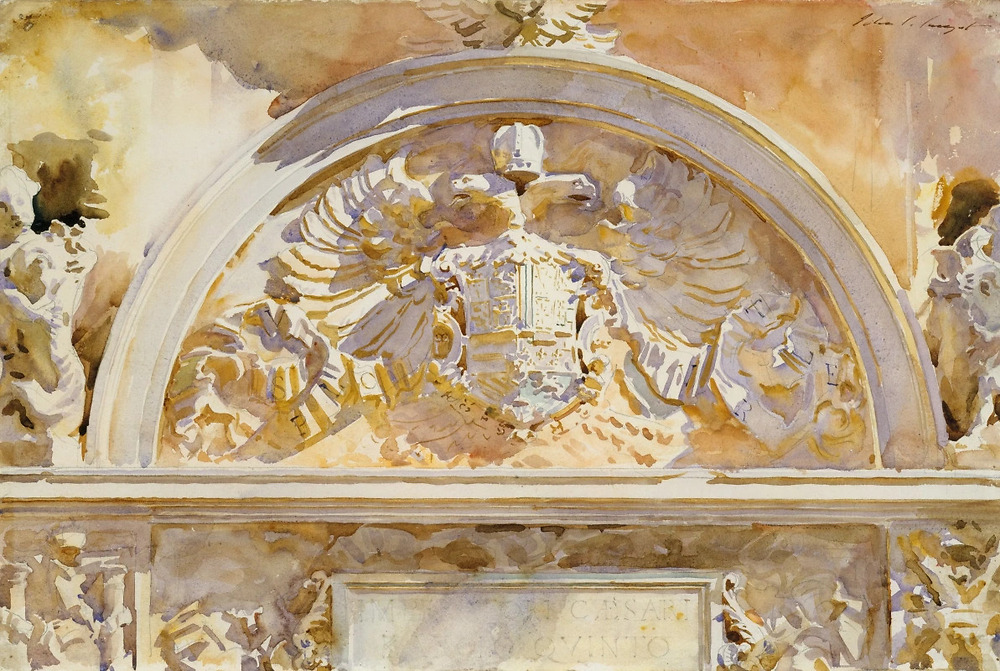
The coat of arms of Charles V, King of Spain, c. 1912
by
John Singer Sargent
Paper
Cotton, cellulose, bamboo, etc.
Most watercolor artists solely use 100% cotton paper. While more expensive than cellulose, its main advantage is that it dries smoothly nearly systematically, while cellulose-based paper dries more discreetly.
Painting on cellulose paper is difficult, and can make the learning experience steeper: the student should learn to live with small drying issues, and instead focus on major aspects like composition. On the other hand, using expensive paper can also psychologically affect beginners negatively.
Some manufacturers like Hahnemühle, experiment with mixing cotton with other fibers (bamboo, agave), thus creating a cheaper paper, that may offer a better experience that pure cellulose. 50% cotton papers like Fabriano 5 offer a decent (archival) practice paper at nearly half the price of a 100% paper.
Tip: At my local art-store, some brands of 100% cotton paper are regularly 40% off; most papers are sized on the two sides; they can both be used when practicing; buying large sheets rather than pads can be yet another way to reduce paper’s costs.
Watercolor techniques that do not require big washes may be less sensitive to the use of cellulose paper, as such techniques will be less affected by non-smooth paper drying.
And finally, all 100% cotton paper won’t behave exactly in the same way: paper sizing can induce various differences, such as on the ability to lift paint, or color “vibrancy”, or subtle differences in water absorption; some manufacturing issues can practically be observed.
More on watercolor paper at handprint.
Grammage
Low-grammage paper will buckle more than high-grammage paper. Low-grammage paper, containing less matter, will cost less. Again, buckling can be more or less of an issue depending on the technique being used. With big washes, buckling will create hills and valleys: the pigment (and water) tending to accumulate in the valleys, thus creating randomly uneven value distribution, thus affecting composition.
Tapped 300gsm paper with a slightly tilted board is often enough to overcome most of those difficulties. Stretching the paper is another option, but is more time consuming, and seems to be less common, perhaps as a result.
Tip: Paper is typically unbuckled by framers as such: wet reasonably the back of the paper, wait a little for the water to impregnate the paper, then, use reversible amidon-based glue on the back to bind the paper on an acid-free board. Put the paper and the board on a press: a few heavy books will do, a towel can be used between the books and the painting to protect the painting and to help absorb excess moisture, which can affect both the painting and the books.
Rough, cold-pressed, hot-pressed
Watercolor paper’s surface is generally characterized as being either
- Rough
- Cold pressed
- Hot pressed
Hot pressed provides a smooth surface, cold press a slightly textured, and rough an even more textured surface. Typically, hot pressed is prefered for botanical/tight artwork, where paper texture goes naturally against fine brush control. Cold pressed or rough is more commonly used to help quickly get some interesting dry-brush textures. The roughness of the paper’s surface will tend to enhance granulation effects. Those names comes from paper manufacturing process.
Comments
By email, at mathieu.bivert chez: